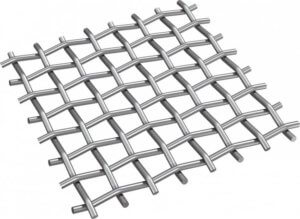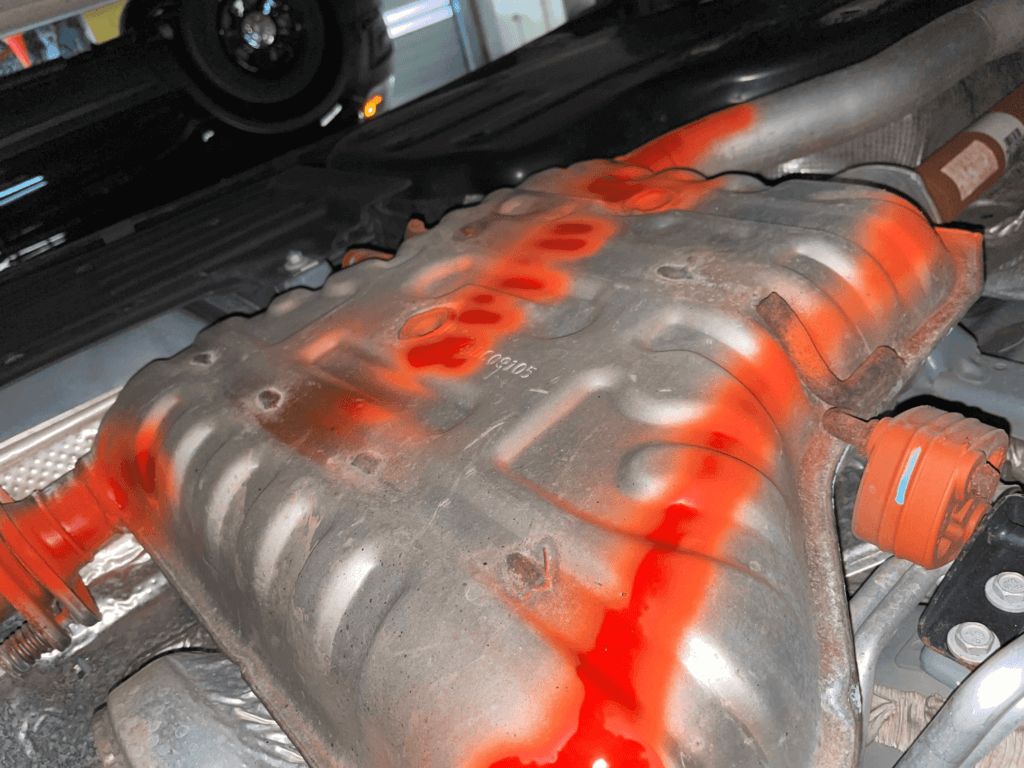Cheap ways to prevent catalytic converter theft
6 cheap ways to prevent catalytic converter theft
Your catalytic converter contains expensive precious metals. When the price of those commodities goes up, catalytic converter theft rises too. It only takes about 3-5-mins for a thief to saw off your expensive catalytic converter. You can buy converter protection cages and plates, but they’re not cheap. So here are 6 cheap ways to prevent catalytic converter theft.
#1: Install welded wire mesh under the cat converter

welded wire mesh to prevent catalytic converter theft
Purchase heavy gauge welded wire mesh from any steel supplier. The heavier the gauge, the better. Mount it to the side frame rails with security fasteners. The mesh will allow for airflow but act as a deterrent to thieves. The heavy gauge will force them to cut out a section instead of just making a small cut and bending the mesh away.
This is a DIY project that’s a cheap way to prevent catalytic converter theft
#2 Engrave your VIN into the catalytic converter housing and paint it
When police stop converter thieves, it’s hard to prosecute them unless they can tie the stolen converters to a specific vehicle.

Etch your VIN into the catalytic converter housing, not the heat shield
VIN etching is the way to prove the thieves stole your converter because legit recyclers won’t touch an engraved catalytic converter. And warning the thieves with orange heat-resistant paint is the best way to make them think twice about stealing yours. It’s not fool-proof, but it is a deterrent.
After engraving, spray the words VIN ENGRAVED on the converter heat shield using heat-resistant orange paint. See this post on how some police departments are offering this service. A converter can run at temps around 1,200° but the paint is rated to 500° so make sure you spray the heat shield, not the converter itself.

#3 At home, reduce access by parking as close to a fence or garage as possible
Catalytic converter thieves go in from the side of the car, not the front or back. So parking close to a fence or garage cuts off access to one side of your vehicle. If you’re at home move garbage cans and recycling bins next to the vehicle on the open side and tie tin cans to the containers. They don’t want to make noise moving garbage cans out of the way.
#4 Flood your driveway or parking pad with light
Police statistics show that criminals aren’t scared off by motion sensing lights. So swap out your high wattage tungsten bulbs with low wattage LED floodlight bulbs and leave them on all night. Lighting the area all night with LEDs will only cost you about 0.60 per month. That’s a small price to pay to provide some deterrence.
#5 If you’re away from home, park on dirt or gravel to make access more uncomfortable
Thieves love it when you park on a concrete or asphalt drive because they can just slide in and out. If you park on dirt or gravel you make it far less comfortable for the thieves.
#6 Prevent catalytic converter theft in parking lots and ramps
• Park in heavily trafficked areas of the ramp near walkways or elevators. Avoid the top floor/roof areas of ramps if possible.
• Park in well-lit areas of the lot or ramp
• Park near video surveillance cameras.
©, 2022 Rick Muscoplat
Posted on by Rick Muscoplat
